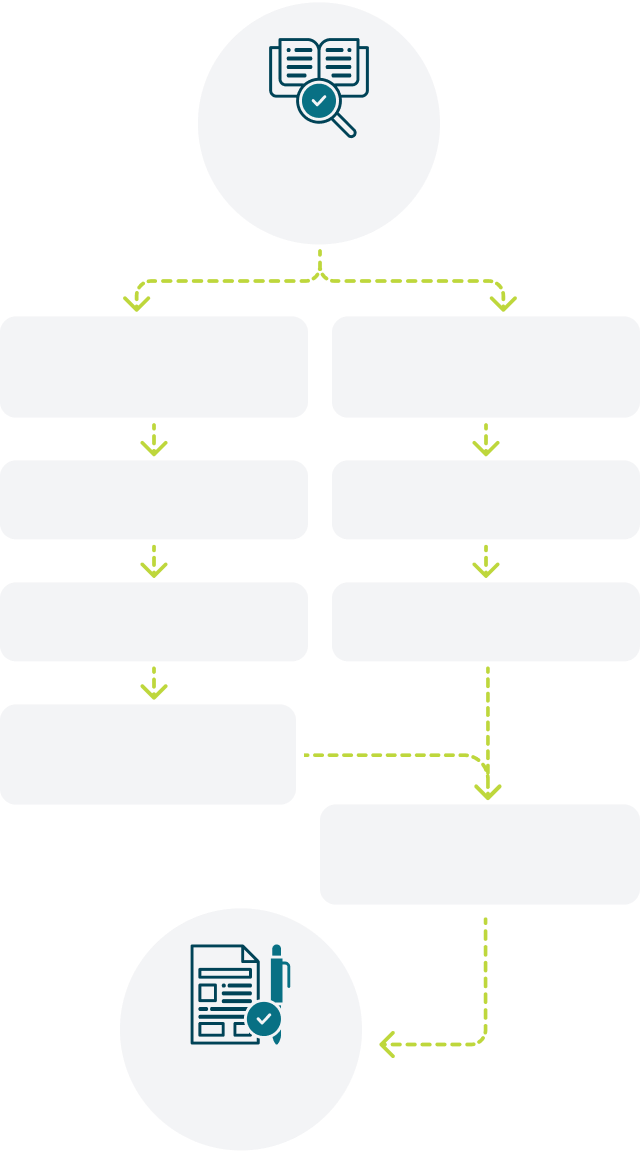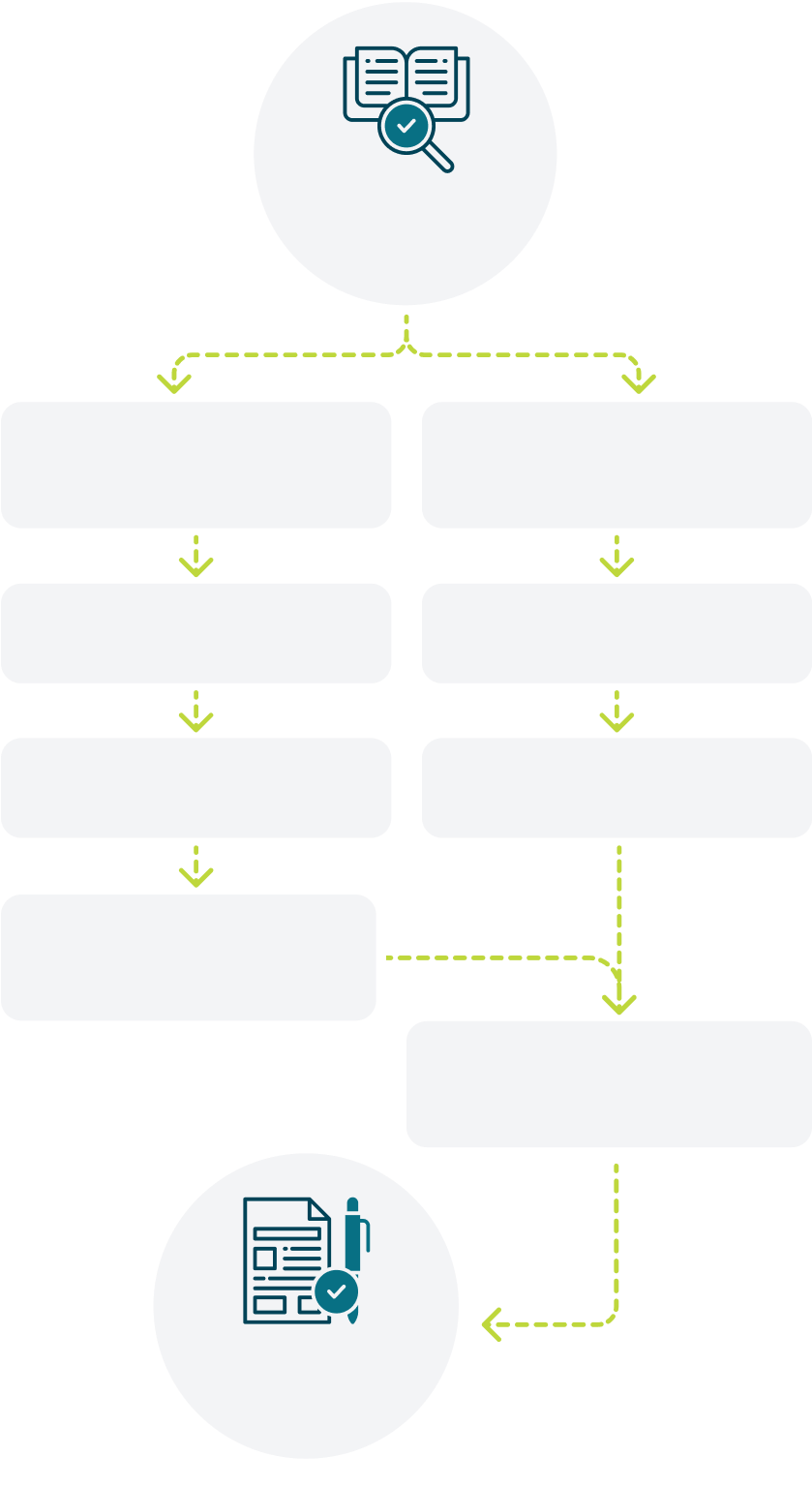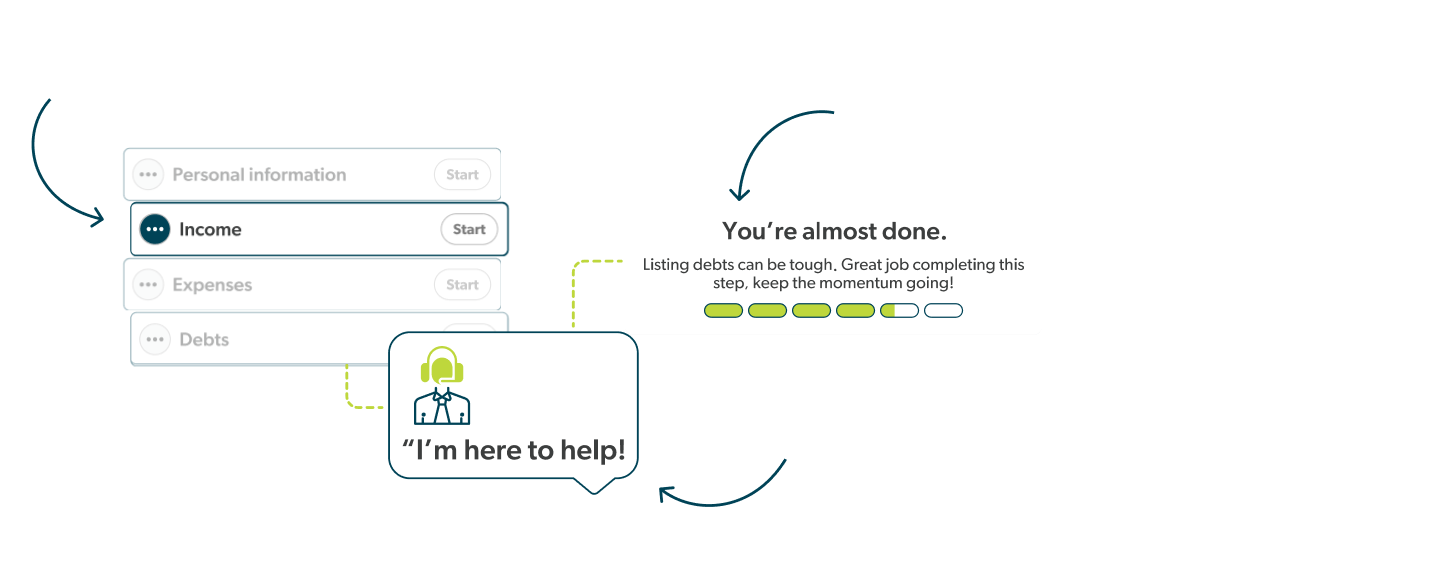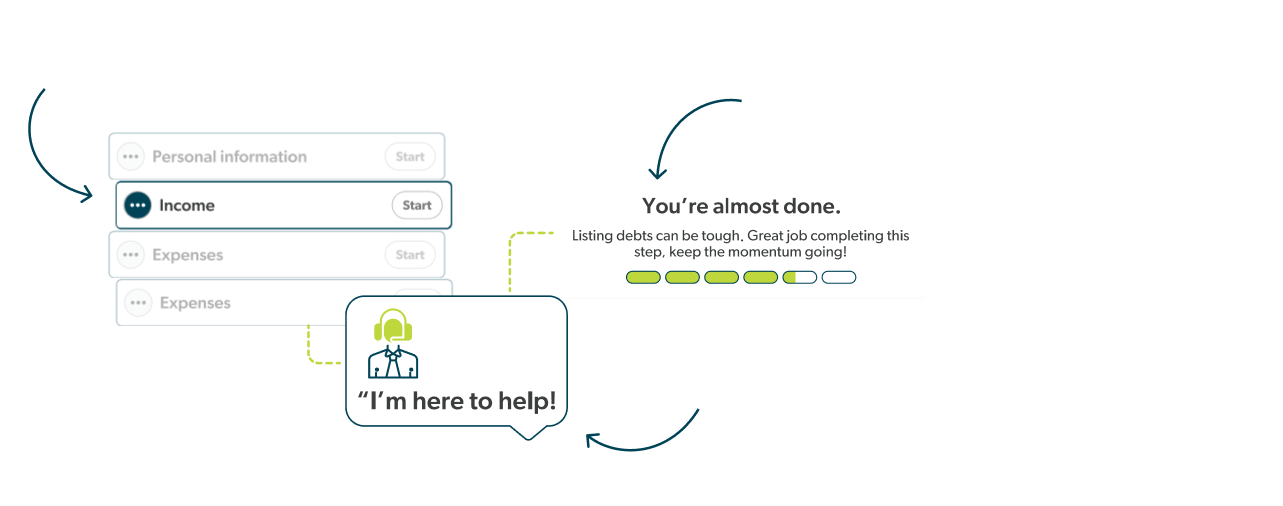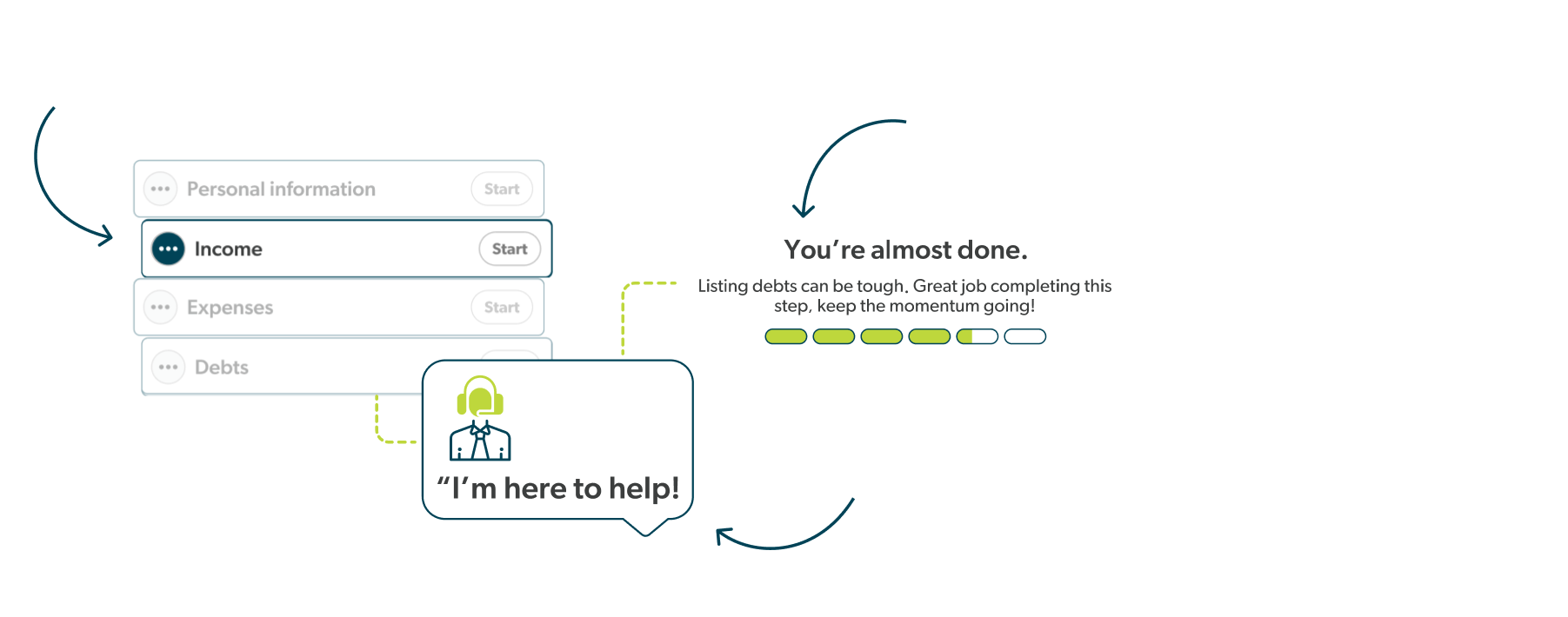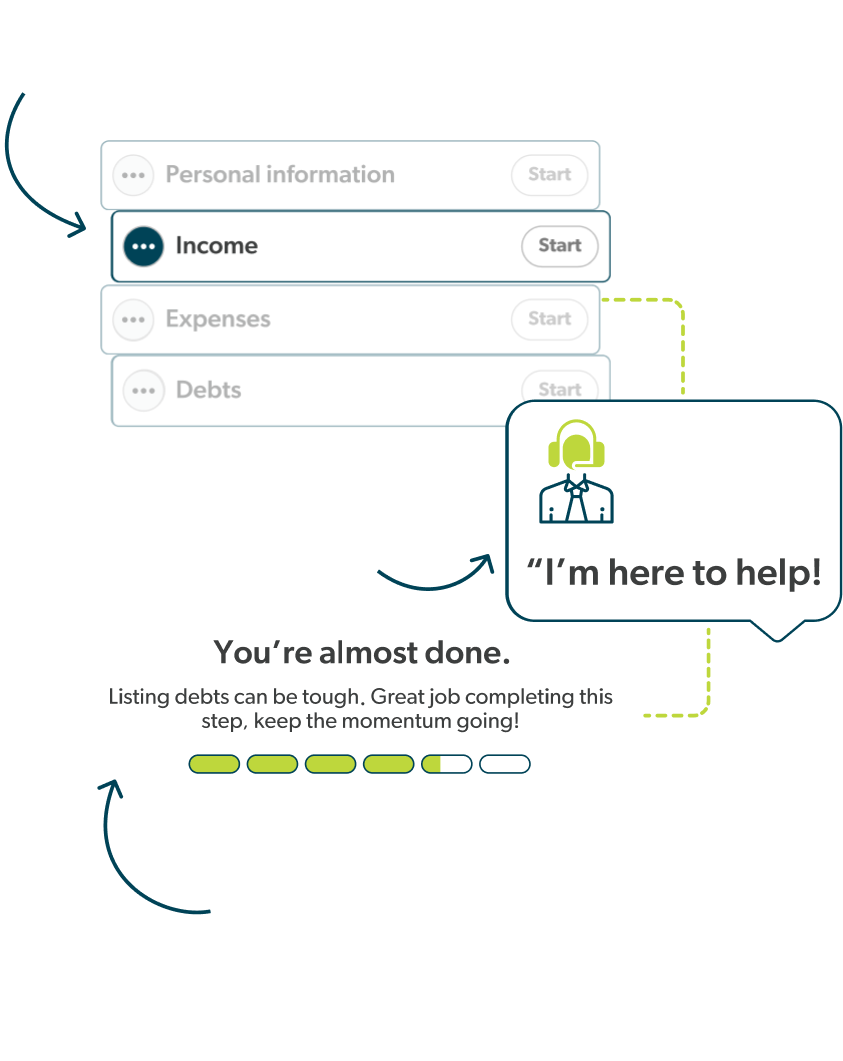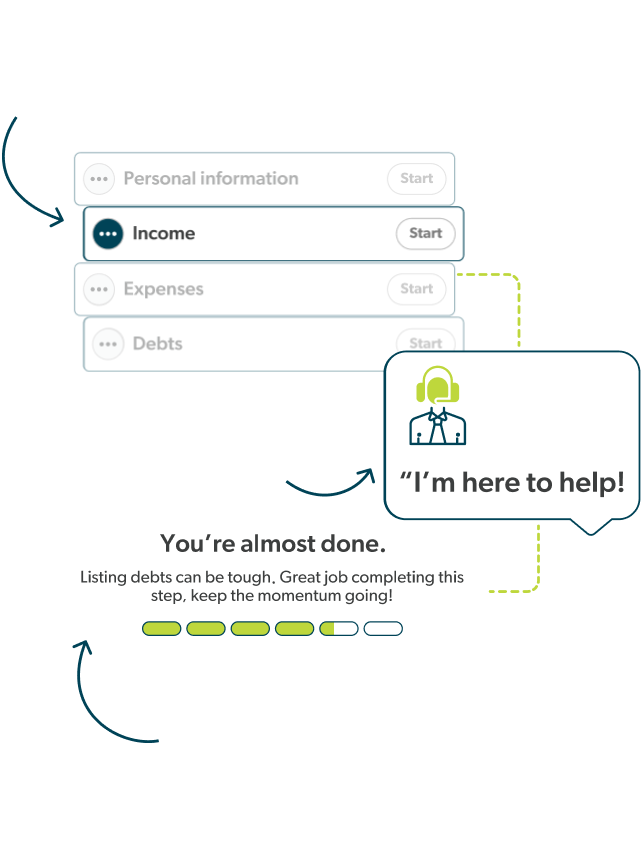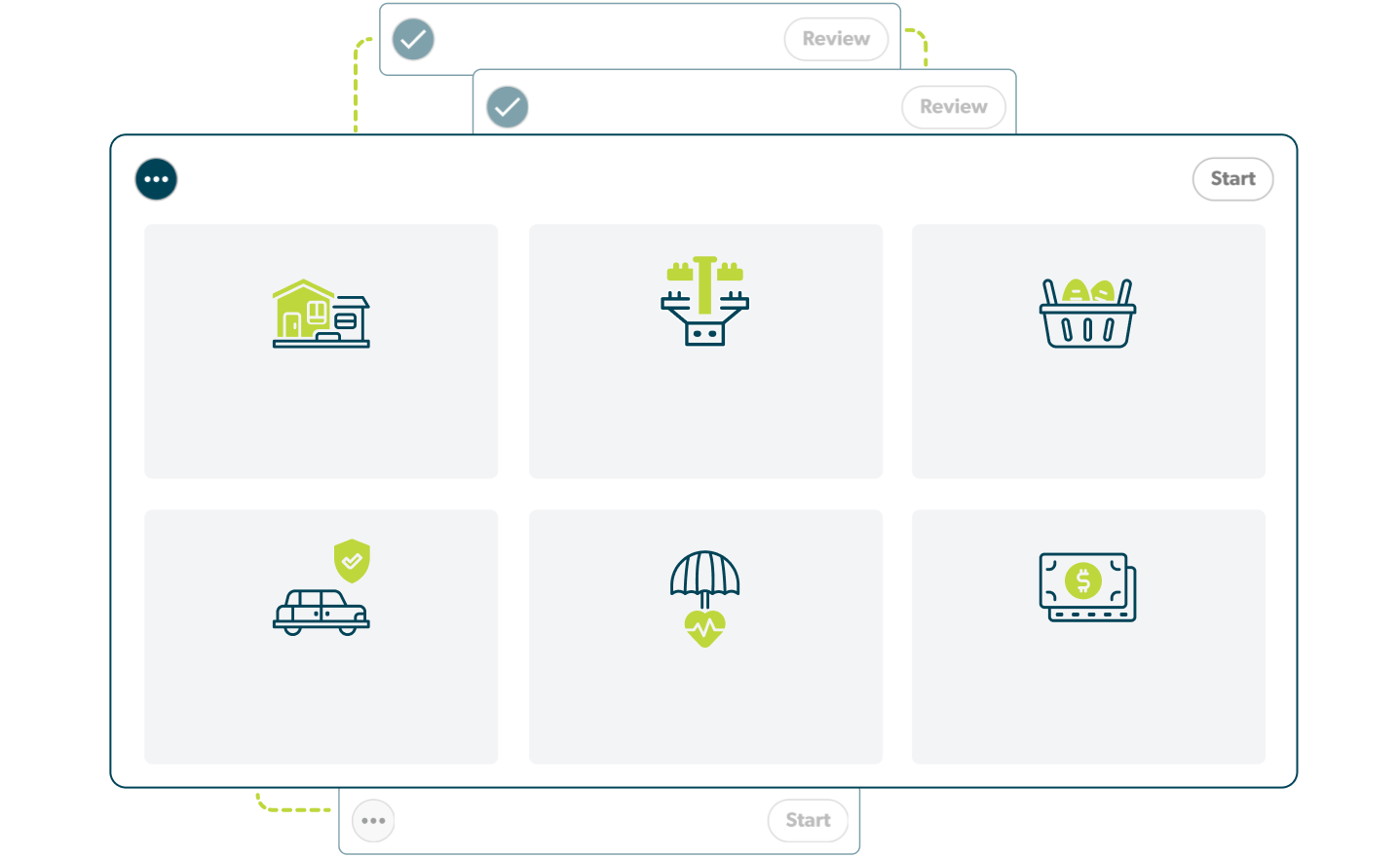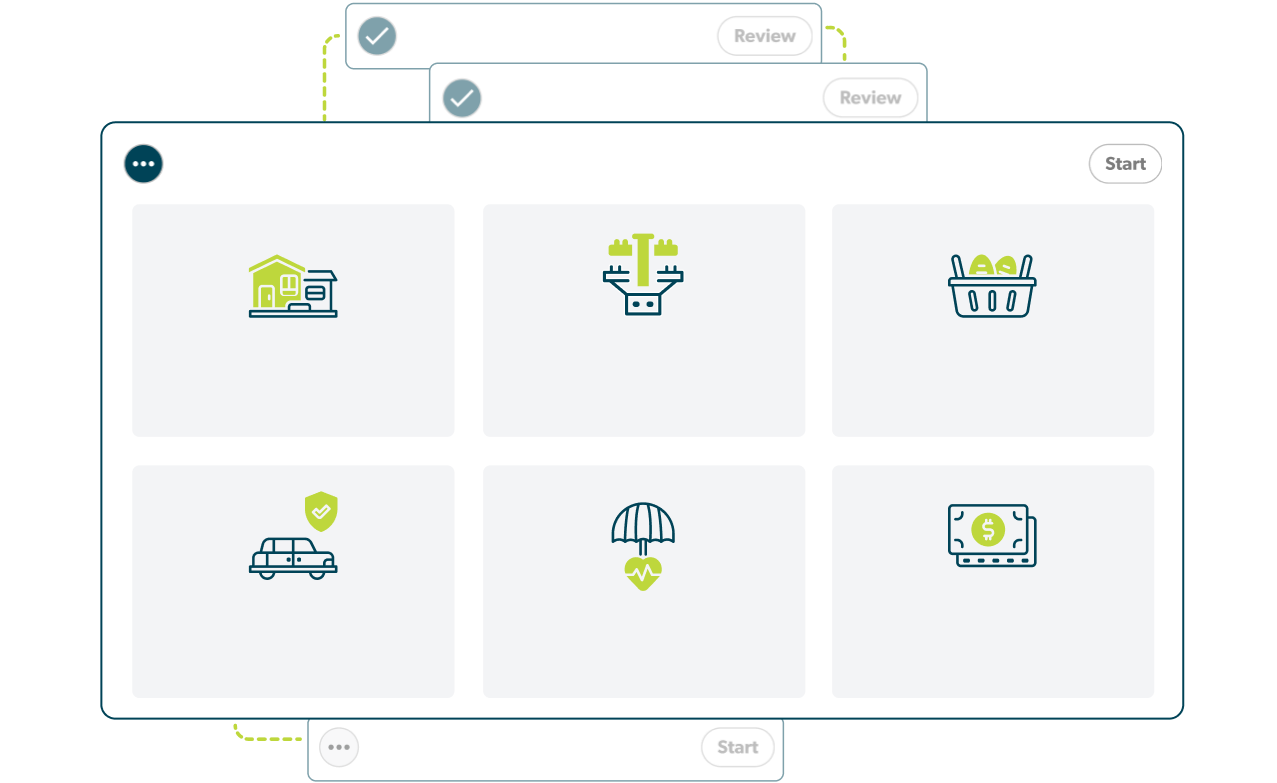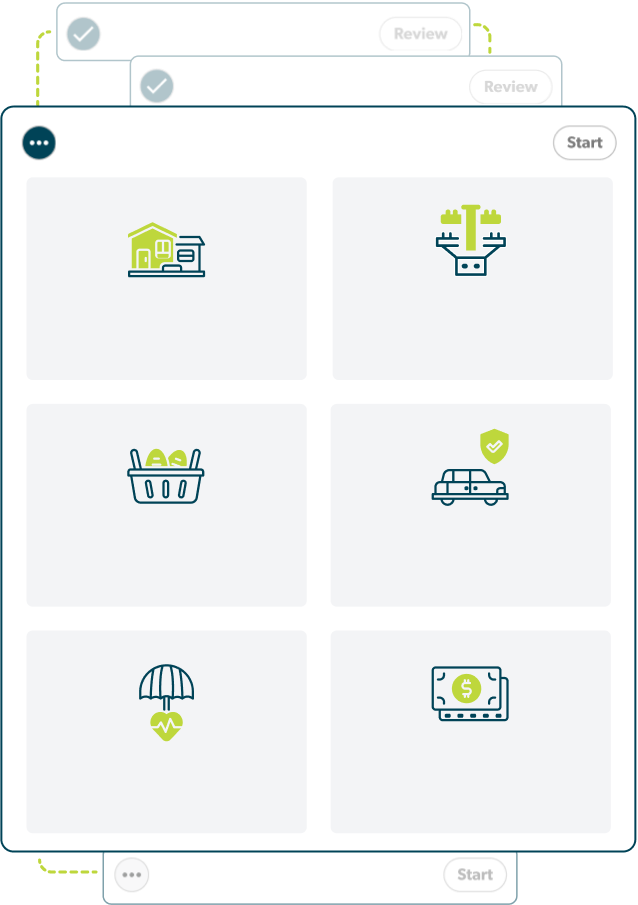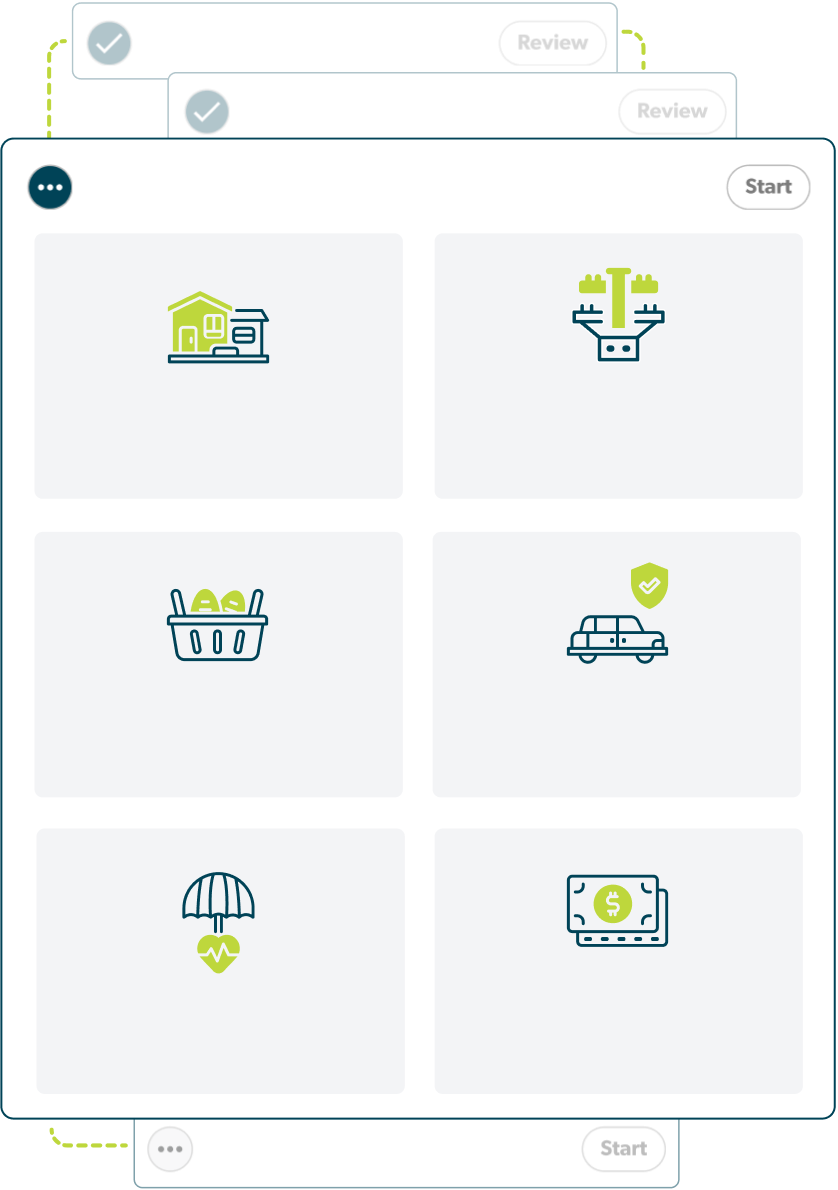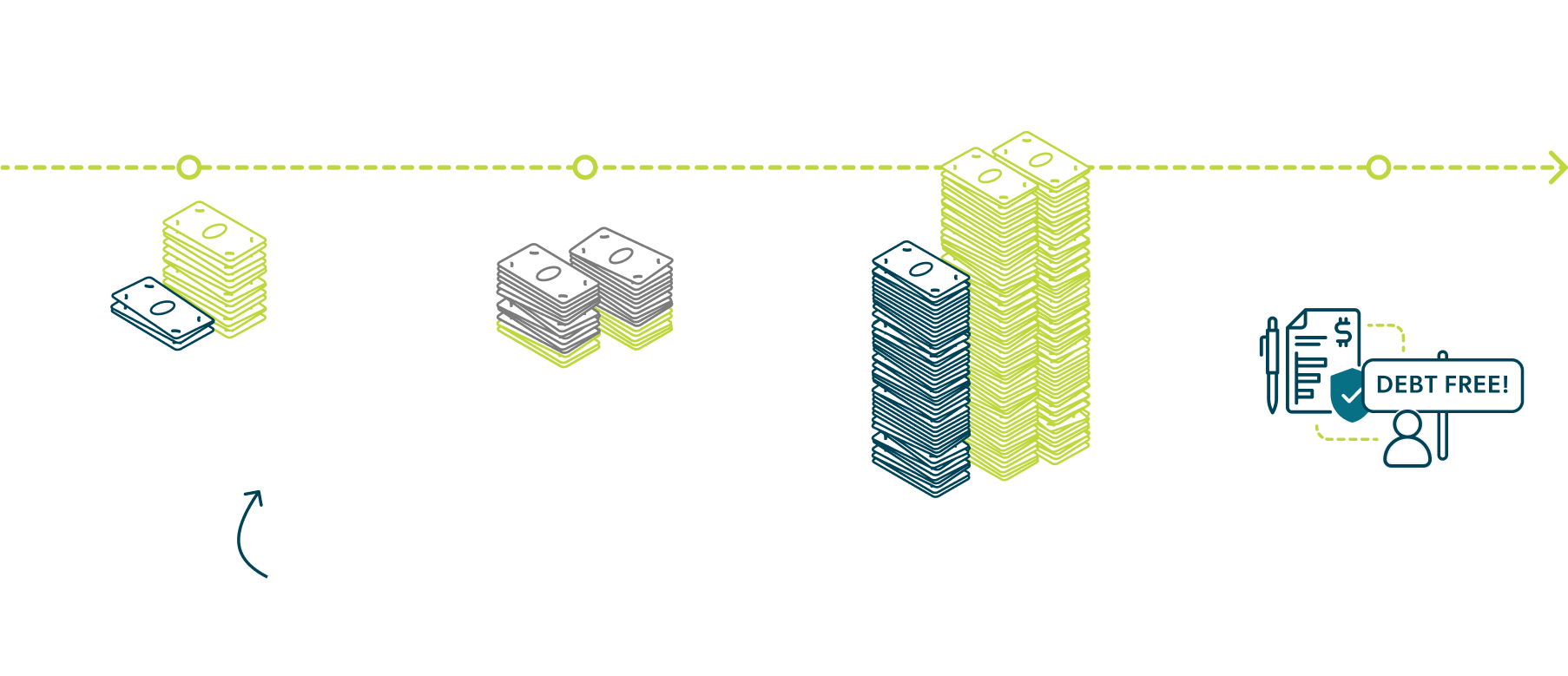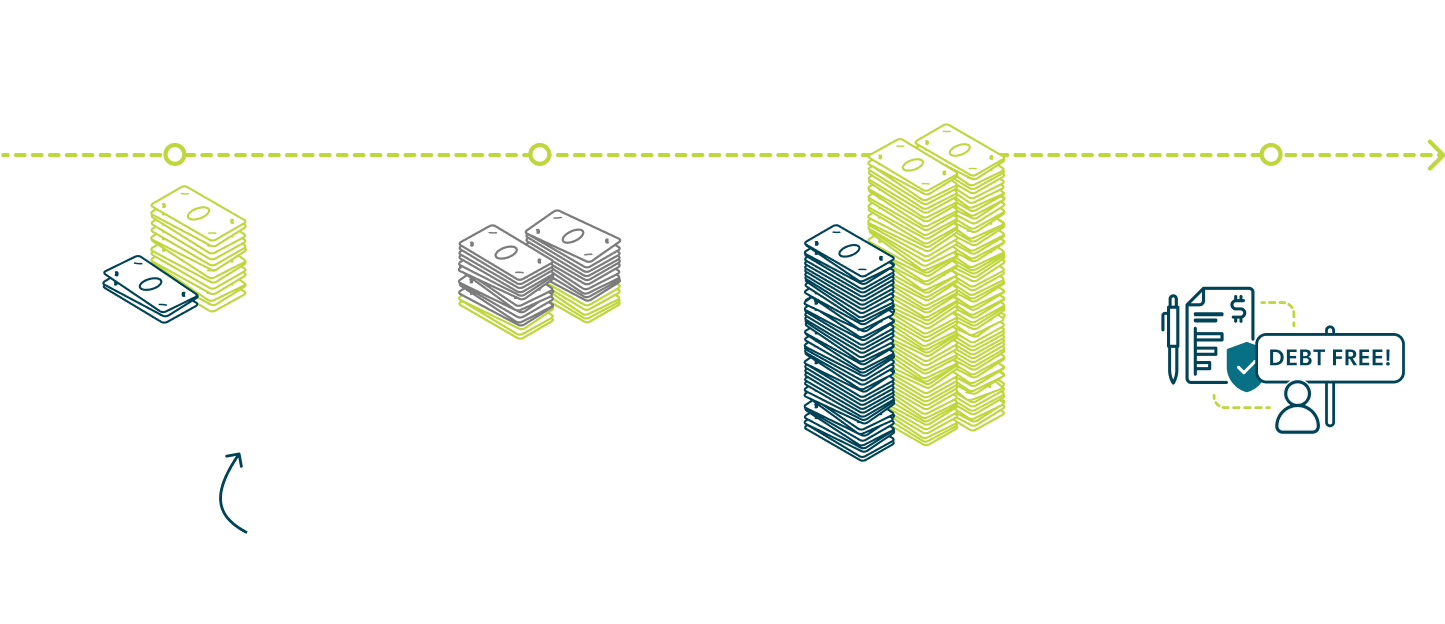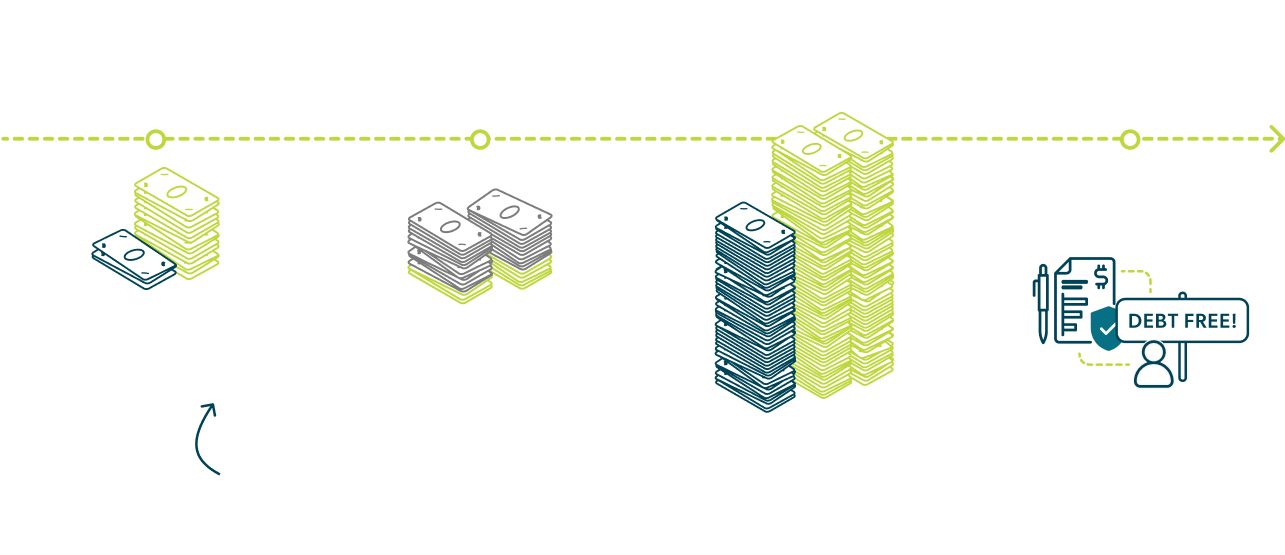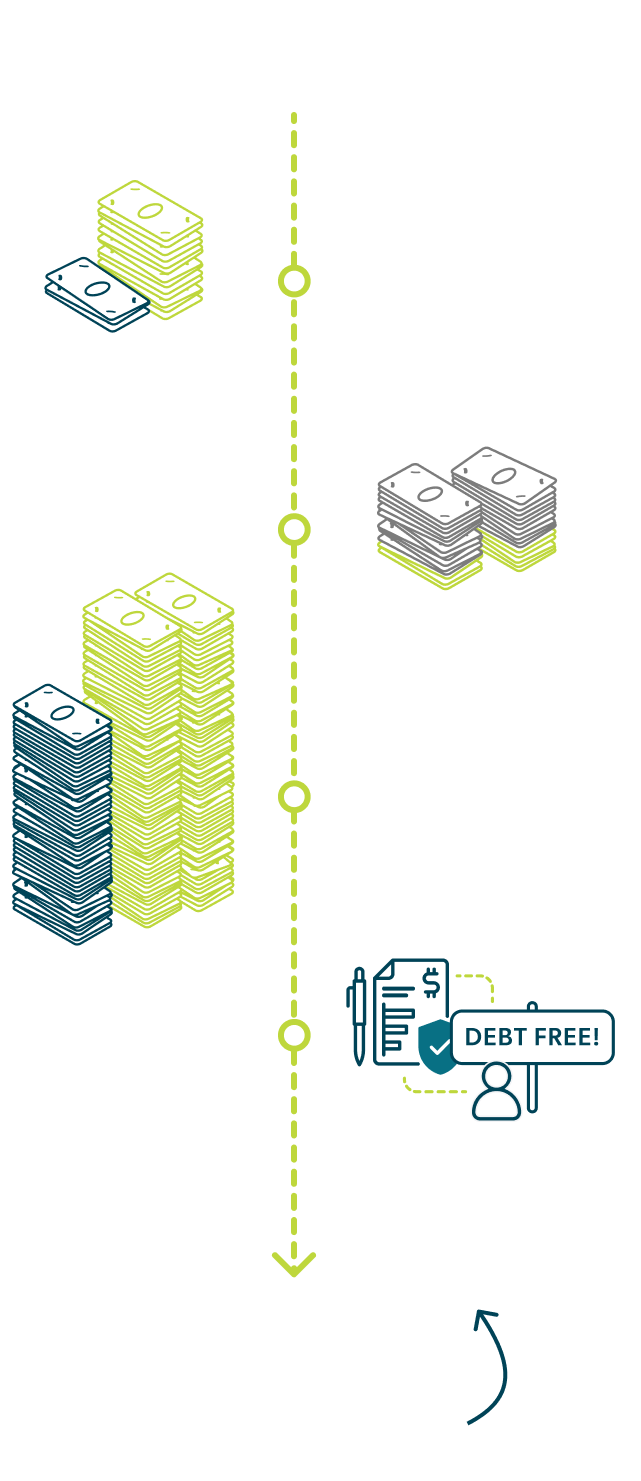
Leo is confused as soon as he starts the online assessment. It asks for his credit card debt, but not his student debt, even though his student debt is much higher. He begins to doubt that a DMP is right for him. He quickly clicks through the assessment to see if it is worth his time.
He reaches a section that asks him to list his monthly expenses, which gives him pause. Should he list the car repair? He knows it’s not a recurring expense, but these emergency expenses keep happening—shouldn’t they be accounted for? Leo doesn't see any option to indicate the nuances of his particular situation.
Frustrated, Leo decides to put the assessment on hold, and begins researching debt settlement programs as an alternative.
When a client is unsure about how relevant a product or service is, or how well a provider understands their situation, this can trigger mental models, or deeply held assumptions. In the context of DMPs, several features can lead potential candidates to feel that DMPs are “not for them.” For example, DMPs don’t always account for all the sources of debt that consumers need help with, leading clients to feel that DMPs are not suited to their needs. Online assessments that offer little personalization can exacerbate this feeling.
Prospective clients may also struggle to input their income and expenses, particularly when those numbers fluctuate month to month. Without additional guidance on how to approach irregular income streams or account for non-monthly expenses, potential users may question the suitability of a DMP. They may also be confused about the level of detail required—and intimidated at the thought of itemizing all their expenses.





